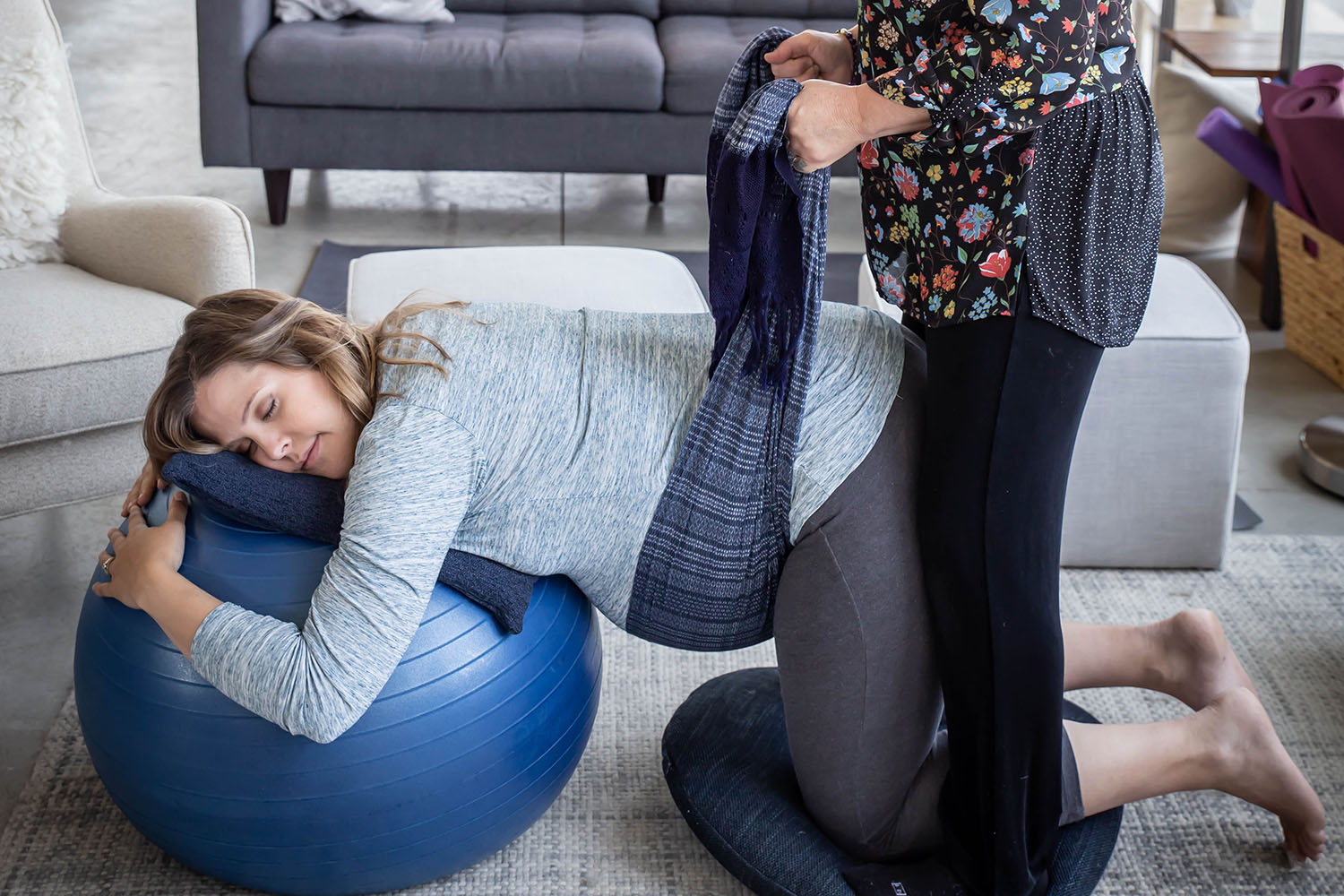
From our Nov. 2019 Newsletter:
A common cause of a long labor is baby being asynclitic. The labor may be long from the beginning, but often labor starts well and then slows down during transition.
Pushing can take hours. Five hours is common with a baby whose head has tipped to the side.
How is it possible for the head to tip to the side? A hand might be up by the chin or ear which can tip the head. But often the pelvic floor is where we look… yep, the floor is crooked! This means baby will have to turn their head to find the space available.
Protect your birth by beginning in pregnancy to prepare your body with daily activities. We suggest some special techniques to restore more balance to the pelvic floor with the Side-lying Release. This can be done a couple of times a week through pregnancy and again in labor. Comfort is added, pain is reduced.
See this article to get the details on this amazing technique, when to use it, and when you shouldn’t do it.

This birth story comes from Erica, 38, who first emailed Spinning Babies® creator Gail Tully at 36 weeks pregnant with her second seeking advice on her upcoming birth. Her first child was asynclitic.
Here’s a summary of what Gail recommended to Erica:
“Your own pelvic mapping indicates a roomy pelvis! Your Belly Mapping shares information that baby may be in a Right Occiput Transverse baby position now or a Right Occiput Posterior position. The description of your labor hints of some potential torsion that was exasperated by the compound presentation (arm up). The tilt or turn in the uterus can allow an arm to fit easier by the face than the side.
Helping alleviate this potential twist now will help immensely. And, since it’s a potential twist, it’s good to know that if there isn’t a twist, the Side-lying Release won’t cause a twist if you do it on both sides each time you do it.
Try The Jiggle before bed. Do Forward-leaning Inversion once daily, once in early labor, and if there is a stall later at any time. Use the Side-lying Release 2-4 times a week now, in early labor and if there is pain, asymmetrical labor pattern or asymmetrical or slow dilation. Once your baby is engaged in the pelvis, during labor, follow a Side-Lying Release with a side lunge or side-lying with peanut ball between your legs.
When baby is low in the outlet, visible or close, open the outlet by putting knees together and feet apart with heels pointing out and toes pointing in. Feet can be separated by a peanut ball and knees resting together with a little towel or cushion to buffer the bones when you are on your side in bed.
You are facing a common modern issue and showing how to avoid a cesarean. Your choice of birth center and being in the land of midwives certainly helped you avoid a cesarean for your first birth and now I hope to add comfort and ease to your second birth. Keep me posted!”

Update on Baby from Erica: “After contractions started, we did the Side-lying Release with my husband before he left for work. Contractions picked up and then died off, and I had a nice long nap. Got up, and my mom and I did some cleaning, then had a cup of tea, then went on a walk in the neighborhood with my son.
Contractions started picking up again, then my water broke. From then on, it was fast and furious.
Baby was born within two hours. I could barely make it back a couple blocks to the house and get in the car to drive to the birth center. My husband arrived shortly thereafter, and we did Shake the Apples (which helped low back pain) and SLR, then I got in the tub.
I remembered what you said and panted as baby was coming out. I pushed just a little and my body did the rest. Baby was born underwater.”
Congratulations, Erica! ? Thank you for sharing your story with us! Do you have a Spinning Babies birth story? Please share it with us at info@spinningbabies.com.